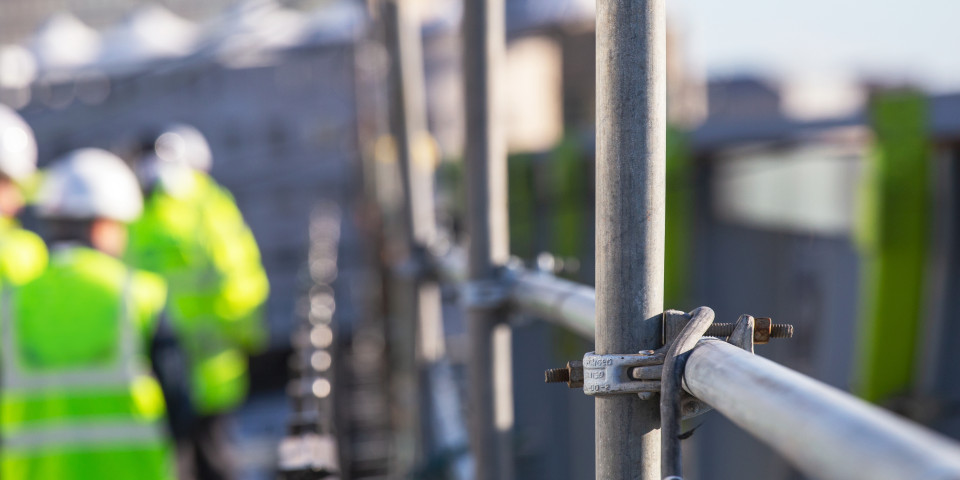Latest News
What is Temporary Works in Construction: A Comprehensive Guide
Posted on Monday, 14th August 2023

When it comes to construction projects, one term that often pops up is "temporary works." But what exactly does it entail, and why is it crucial in the world of construction? In this blog, we'll break down the key aspects of temporary works, from its definition to its significance, examples, regulations, and potential risks. Moreover, we'll also take a look at a range of frequently asked questions around temporary works, aiming to provide a comprehensive understanding of this critical construction concept.
What is Temporary Works?
Temporary works refer to the engineered solutions, structures, or support systems that are put in place to enable the construction, maintenance, or use of a permanent structure. These solutions are designed to provide stability, safety, and efficiency during the construction process, ensuring that the final structure can be built as planned. Temporary works are an integral part of construction projects and often involve intricate planning and engineering.
What is a Temporary Works Course?
A temporary works course is an educational program designed to provide professionals in the construction industry with the necessary knowledge and skills to understand, plan, and execute temporary works safely and effectively. These CITB courses include:
- Temporary Works Supervisor Training Course
- Temporary Works Co-ordinator Training Course
- Temporary Works General Awareness Training eCourse (please note this is a free course)
These courses cover topics such as design principles, risk assessment, compliance with regulations, and best practices for temporary works implementation.
The Purpose of Temporary Works
The primary purpose of temporary works is to ensure the stability and safety of a construction site, workers, and the general public during the building process. Temporary works help distribute loads, prevent collapses, and manage construction-related risks. They facilitate the construction of complex and large-scale structures by offering structural support, access, and protection.
Examples of Temporary Works
Temporary works can take various forms, including:
- Scaffolding: Erected to provide access and support for workers during construction.
- Shoring and Formwork: Used to support excavations and moulds during concrete pouring.
- Temporary Bridges: Constructed to facilitate site access over water bodies or other obstacles.
- Propping: Temporary supports used to maintain the stability of adjacent structures during construction.
- Trench Boxes: Employed to safeguard workers within excavations.
- Temporary Platforms: Platforms used for work at height during construction.
What are Temporary Works Under CDM?
Under the Construction (Design and Management) Regulations (CDM), temporary works are subject to careful planning and coordination. The regulations emphasise the need for risk assessment, proper design, and effective communication to ensure the safety of all parties involved.
Types of Temporary Works?
Temporary works can be categorised into several types:
- Structural Temporary Works: Supports for loads during construction, such as scaffolding and formwork.
- Geotechnical Temporary Works: Solutions for managing soil and water during excavation or foundation work.
- Groundworks Temporary Works: Solutions for managing ground stability during construction.
What Would be Considered Temporary Works in an Excavation?
In excavation projects, temporary works might involve shoring systems to prevent soil collapse, trench boxes to safeguard workers, or even retaining structures to hold back surrounding earth.
What is a Temporary Platform?
A temporary platform refers to a raised surface constructed for workers to access areas at height safely. These platforms can be made from various materials, such as scaffolding or prefabricated units.
Example Temporary Works Design
Consider a large construction project involving the creation of an underground parking structure. The temporary works design might include excavation support systems, formwork for pouring concrete walls, and temporary bridges for access. Engineers would meticulously plan each element to ensure stability and safety.
What are the Risks of Temporary Works?
While temporary works are essential for construction, they come with inherent risks, including structural failure, inadequate design, and accidents during installation. Proper design, risk assessment, and adherence to regulations are crucial to mitigate these risks.
Do Temporary Works Require Planning Permission?
In most cases, temporary works do not require separate planning permission as they are directly related to the construction process. However, compliance with regulations and communication with local authorities might still be necessary.
What is a Category 3 Check?
A Category 3 check is a comprehensive examination of temporary works design and execution. It involves thorough assessments of design calculations, structural integrity, safety measures, and compliance with regulations.
In conclusion, temporary works are the unsung heroes of construction projects, ensuring safety and stability while the permanent structures take shape. With the right training, planning, and execution, temporary works play a pivotal role in bringing architectural visions to life while safeguarding all involved parties.
Looking for Temporary Works Training?
If you're nodding your head, our team of seasoned industry experts are here to hold your hand (figuratively, of course!) and guide you through everything you need to know about temporary works. Whether you're an experienced professional or a newbie eager to learn, we've got your back. Don't wait – let's chat and get you started on your journey to your ideal temporary works job role. Get in touch today via phone or email, and let's build amazing things together – one temporary structure at a time!


